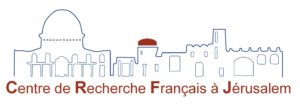Eleonore Merza ~ The Israeli Circassians: Non-Arab Arabs
 Bulletin du Centre de recherche français à Jérusalem (2012) One day, I was at the tahana merkazit [central bus station] in Jerusalem with Mussa and we went through the metal detector. They let him go through but when it was my turn, they asked for my identity card. They saw that we kept talking together so they asked for his I.D. too. He is a redhead and has blue eyes so they thought he was Ashkenazi. But they saw his name ‘Musa’ – that sounds quite Arabic and they asked him if he was Arab, but then his family name doesn’t sound Arabic at all so he explained that he was Circassian. Then, they asked him what religion he was and he said ‘Muslim’. They were dumbfounded…
Bulletin du Centre de recherche français à Jérusalem (2012) One day, I was at the tahana merkazit [central bus station] in Jerusalem with Mussa and we went through the metal detector. They let him go through but when it was my turn, they asked for my identity card. They saw that we kept talking together so they asked for his I.D. too. He is a redhead and has blue eyes so they thought he was Ashkenazi. But they saw his name ‘Musa’ – that sounds quite Arabic and they asked him if he was Arab, but then his family name doesn’t sound Arabic at all so he explained that he was Circassian. Then, they asked him what religion he was and he said ‘Muslim’. They were dumbfounded…
The 4,500-odd Israeli Circassians, who arrived during the second half of the 20th century in what was then part of the Ottoman Empire, have an unusual identity: they are Israelis without being Jews and they are Muslims but aren’t Palestinian Arabs (they are Caucasians). Little known by the Israeli public, the members of this inconspicuous minority often experience situations like the one reported above; indeed, many of them have a fair complexion and light-colored eyes that don’t match the widely spread (and expected) clichés about Muslims’ physical traits. At the same time, many Circassians – men, in particular – bear a Muslim name, which immediately causes them to be classified as “Arabs.”
Until 1948, the Zionist project’s exclusive aim was the establishment of a Jewish state – not the establishment of a state where Jews could finally live far from the anti-Semitic threat. In The Jewish State, Theodor Herzl had already stated that “the nations in whose midst Jews live are all either covertly or openly Anti-Semitic”2 and the establishment of a Jewish state was the future as Zionism saw it. In fact, when the State of Israel was declared, it was defined as the state of the Jewish people, inheritor of the Biblical land of Israel and of the kingdom of Judah. This exclusive definition has made the creation of citizenship categories quite arduous. Actually, some figures of Zionism opposed Herzl’s political Zionism even before the creation of the state. One of them was Asher Hirsch Ginsberg, better known under his pen name Ahad Ha’am. Even though Ahadd Ha’am received the Zionist circles’ moral support, he was convinced that the future state could not ingather all the Jews and he fought Herzl’s political Zionism. After his visits in Palestine, the author wrote down his impressions and criticized the functioning of settlements. In his essay Emet me-Eretz Yisrael [A Truth from Eretz Yisrael], he denounced the myth of the virgin land conveyed by the Zionist leaders and reminded them that their analysis did not take into account the Arabs:
From abroad, we are accustomed to believe that Eretz Israel is presently almost totally desolate, an uncultivated desert, and that anyone wishing to buy a land there can come and buy all he wants. But in truth it is not so. In the entire land, it is hard to find tillable land that is not already tilled […] We are accustomed to believing that Arabs are all desert savages, like donkeys who do not see or understand what is going on around them. This is a serious mistake.
The complete essay: https://journals.openedition.org/bcrfj/7250
Référence électronique
Eleonor Merza,The Israeli Circassians: non-Arab Arabs, Bulletin du Centre de recherche français à Jérusalem [En ligne], 23 | 2012, mis en ligne le 20 février 2013, Consulté le 10 juin 2020.
Eleonore Merza is a political anthropologist; she completed her doctorate at the EHESS. She is an associate researcher in the Anthropology of Organizations and Social Institutions Research Unit at the Interdisciplinary Institute for the Anthropology of Contemporary Societies (IIAC-LAIOS: CNRS-EHESS). She currently pursues post-doctoral studies at the French Research Center in Jerusalem (CRFJ). Her doctoral thesis focused on the identity of the Circassian minority in Israel and her current research deals with non-Jewish citizens, minorities, and co-existence in today’s Israeli society. She taught at the School for Advanced Studies in the Social Sciences (EHESS) where she was a lecturer on the Israeli-Palestinian conflict.